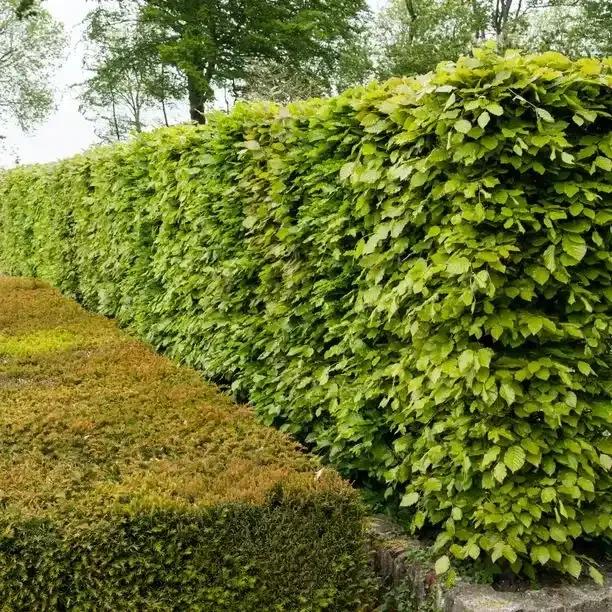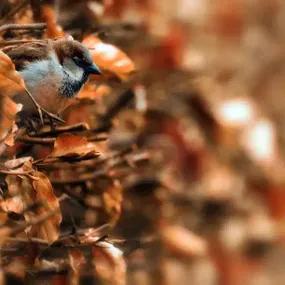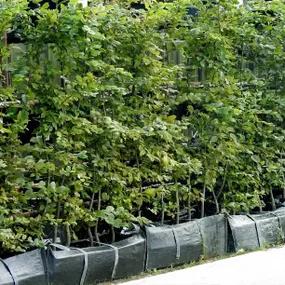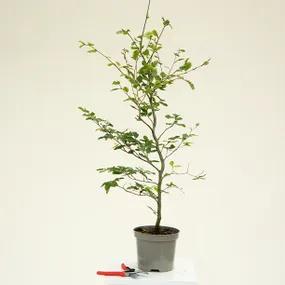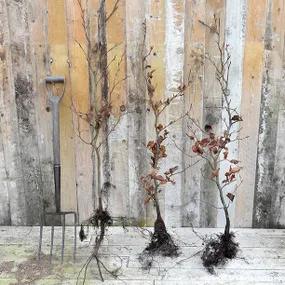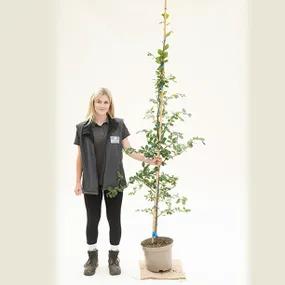Green Beech Hedging Plants
The details
Fagus sylvatica
Hedge Plants
- Hedge: 1m to very tall
- Site: any well drained soil, sunny
- Best Non-Evergreen Formal Hedge Plant
- Single Row: 3/m
- Native
- Glossy green foliage
- Holds Autumn leaves in Winter
- RHS Award of Garden Merit
Recommended extras
Description
Fagus sylvatica: Green Beech Hedge Plants. Bareroot or Instant Trough
Delivered by Mail Order Direct from our Nursery with a Year Guarantee
Green Beech is superb as formal garden hedging. It adds value to your property on par with Yew, which is by default the most valuable in most places.
Unlike an evergreen hedge, Beech gives you seasons of shifting colour.
In spring, its branches are clothed with bright green leaves with a wisp of furriness that mature to a rich green in Summer, and remain for most of Winter russet-coloured in the autumn.
The tiny flowers mature into beech nuts in the autumn. The bark is smooth and grey, the colour of elephant hide.
As a well-clipped hedge, you get the changing foliage colours from spring to autumn, and then it will hold onto its dry leaves through the winter (known as marcescence), giving you the privacy of an evergreen hedge but with all that variety in colour and tone across the year.
As a tree, it can reach 35 metres, and tends not to hold its leaves.
Browse copper beech hedging plants, all hedging plants, or buy beech trees in large standard sizes.
Features
- Hedge: 1m to very tall
- Site: any well drained soil, sunny
- Best Non-Evergreen Formal Hedge Plant
- Single Row: 3/m
- Native
- Lush glossy green foliage
- Holds Autumn leaves in Winter
- Adds value to your property
- RHS Award of Garden Merit
Delivery season:
- Bareroot Beech plants are delivered during late autumn and winter, approximately November-March inclusive.
- Pot-Grown Beech plants are delivered year round.
Spacing a Beech Hedge: How many plants do I need per metre?
The planting density for your Beech hedge depends on the purpose, a normal garden boundary hedge is 3 plants per metre, spaced at 33cm, in a single row.
- Stock-proof country hedge (traditional in some areas): 6 plants per metre, in a double row (i.e. start one row 16.5cm after the other), with 40cm between rows.
- A decorative hedge within your garden could be 2 plants per metre, spaced at 50cm, in a single row.
What size Beech hedge plants should I buy?
By default, we recommend the smaller sizes, up to 80cm tall.
60/80cm tall the most popular size, considered an ideal compromise between price, size, root disturbance, and waiting time until you get a mature hedge.
- If you need instant height, or are filling gaps in an existing hedge, then pick the biggest size that fits your budget.
Smaller plants:
- Are cheaper
- Easier to plant
- Establish well because their roots are more intact
- May not need support in sheltered site with no threats
- Are easy to clip attentively and ensure a very bushy hedge from the base
What is a trough?
A trough is a large plant container made from strong, flexible woven plastic.
Our troughs are 100cm long, and 30cm square at the ends.
- Contains 5 beech
- Is cheaper than buying 5 potted beech
- Plants can develop more roots in the extra space
- Keeps plants growing together in a straight row
- Is easy to carry & move as a liner for plant containers
One trough of Beech plants is a ready-made metre long section of hedge that is best planted directly into well-prepared soil.
But, the plants could stay in their trough and insert into a large container as a liner.
They will need irrigation; in the long term, also top-ups of soil as the potting medium settles.
Green Beech in your Garden
Along with Yew, Beech is a go-to hedge for increasing the value of your property, and is the most popular deciduous garden hedge in the UK today.
A space enclosed by beech has a weightlessness to it that cannot be achieved by the more sombre dark colours of evergreen hedging. A beech hedge will provide 'bones' for your garden year round so that you can divide your garden into rooms, or just create an elegant boundary with your neighbour.
A clipped beech hedge is a tremendous backdrop to a herbaceous border, providing a contrast to the colour of the flowers and a flat background to set off the architectural shapes of plants like Acanthus or any dark, evergreen topiary.
One planting idea is to grow a pretty Ivy such as Sulphur Heart / Paddy's Pride under the hedge, which smothers the weeds and frames its base nicely. On a slightly grander scale, statues looks wonderful against a beech hedge: stand a stone or lead urn, planter or figure against it and immediately your garden will look more sophisticated and complete.
Once a hedge is well-established you can experiment with cutting niches into it to contain statues or sculptures. To add drama, intersperse some copper beech amongst the green (or go the whole hog and just plant a copper beech hedge).
Growing Green Beech Plants
Beech will thrive in any well drained soil, in a sunny position.
It is wind resistant, ideal on the tops of banks (where it loves the drainage).
Beech does not like:
- Wet soils
- Winter waterlogging
- Full shade
If it takes more than a day for surface water to drain away after heavy rains, then your soil is probably too heavy for Beech, in which case Hornbeam is the closest alternative.
It is easily clipped to shape and only requires yearly pruning making it low maintenance once established.
It rarely succumbs to disease: when it does, it is usually tar crust, which typically affects old trees, not hedges.
Planting Instructions
- You can not plant when it is freezing or pouring with rain.
- Avoid planting on a very windy day. If it can't be helped, take care to keep the roots wrapped up and moist until they go into the ground.
- Whichever planting method you use, it is much easier with two or three people.
Spacing a hedge
- Single row spacing: 3 per metre, 33cm apart
- Staggered double row spacing: 6 per metre, 33cm apart along each row, rows 40cm apart
Slit or Trench Planting?
- Beech is usually a garden hedge plant that is trench planted, see our how to plant a formal hedge film for details (the plants in this video are delivered pot-grown; planting out bareroot stock is essentially the same).
- However, small beech plants delivered in sizes up to 80cm could be slit planted, see our how to plant a country hedge film for details, but note that unlike those country hedge plants, you do not hard prune Beech by 50% after planting.
Prepare your site before planting:
A mature hedge can last generations, but it needs help to establish well, so prepare the site thoroughly for a great start
- If you are slit planting small plants (under 80cm), scalp off the top layer of turf and flip it to the side to expose the soil along the planting line
- If you are trench planting, dig over the area, kill the weeds, remove rocks, roots etc. On poor dry soils, mix in a some well-rotted compost or manure
- Do not improve clay soils, instead use compost/manure as mulch after planting
Hedge Planting Accessories:
- Rootgrow makes such a big difference to establishment. The amount that your order needs will be calculated for you during checkout
- A leaky pipe will save you the effort of watering - it's a lifesaver for when you go on holiday
- Weed control fabric such as Mypex is not usually necessary in your garden, where you can maintain the hedge easily. It is very useful for places where weeding will be infrequent
- Where rabbits and deer are present, a spiral guard supported by bamboo cane will protect your plants
Remember to water establishing plants during dry weather for at least their first summer after planting.
Keep the soil around your beech saplings free of weeds.
Aftercare
If your beech was well planted, there are only two things it needs in its early years:
- Kept free of weeds, including grass. Use organic mulch, or Mypex covered with bark or gravel around your hedge.
- Watered well in dry weather, especially in year one. Watering deeply to soak the soil once or twice a week is plenty.
Beech is very shallow rooted in the first couple of years after planting. It takes at least three years for to establish deep roots.
When you use Mypex or other mulch, your plants will need less water, but still they need water!
Trimming Green Beech Hedge plants
New Beech hedging planted in Winter can be trimmed very lightly, only enough to remove the leaf buds from the ends of each stem, and to prune back straggling shoots.
- On the larger plants, over 80-100cm, trim the tips of branches all over.
- On smaller plants, under 80cm, just nip the tops off each plant.
Trim your young hedge lightly once a year each Winter, until it is mature.
When it is fully grown, you should clip Beech around mid-Spring to tidy, and again in late Summer to make it flush with new growth that will be held through Winter.
Beech Hedge Trivia
Is Beech really native to Britain?
While no one knows for sure, beech has been part of our landscape for at least 5-6000 thousand years, and might well be native to Southern England.
What is the biggest beech hedge in the world?
The tallest and longest hedge in the world, as recognised by the Guinness Book of Records, is the Meikleour green beech hedge in North East Scotland. It is 30m tall and 530m long.
It was planted in late 1745 by local men before they marched to fight in the Jacobite rebellion. They were mostly killed the following Spring at the Battle of Culloden, and so the hedge was allowed to reach such a fantastic height in their memory (and because it provides a fantastic windbreak, but let's not spoil the story here).
Are beech nuts (mast) edible?
The nuts, called beechmast, are edible in small quantities, but the taste is not great: think of them like natural vitamin tablets, and try eating one or two a day.
People used to make a flour from them and soak it to leach out the bitter tannins, making it possible to eat them in quantity.
Pig farmers used to fatten their livestock on beechnuts over winter, a practice reflected in Spain where pigs are fed on acorns: the resulting Jamon Iberico is some of the most expensive in the world.
What is Beech wood used for?
Beech wood is hard, but not rot resistant enough for outdoor structures, so it is used for a wide range of indoor purposes, from furniture and floorboards to musical instruments, tool handles, and plywood.
It makes great firewood:
"Beechwood fires are bright and clear
If the logs are kept a year"

